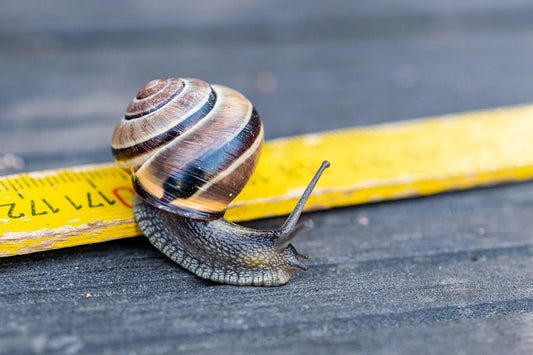 I imagine this drawing is a it intimidating. Rather than a single coil of wire, we now have two transistors; although they could easily be tubes, and many times are. This classic circuit was patented in 1936 by one of our hero's, Alan Blumlein. Like the classic transformer, put any two signals in that share the same qualities and nothing comes out. Should there be a difference in the two inputs, we get amplification; hence its name, 'differential amplifier'. Sequence multiple pairs of these, one feeding the other and you have one means of achieving a fully balanced (true balanced) audio circuit.
When we return to the subject at some point, I'll discuss how and why many audio circuits are not true balanced devices.
I imagine this drawing is a it intimidating. Rather than a single coil of wire, we now have two transistors; although they could easily be tubes, and many times are. This classic circuit was patented in 1936 by one of our hero's, Alan Blumlein. Like the classic transformer, put any two signals in that share the same qualities and nothing comes out. Should there be a difference in the two inputs, we get amplification; hence its name, 'differential amplifier'. Sequence multiple pairs of these, one feeding the other and you have one means of achieving a fully balanced (true balanced) audio circuit.
When we return to the subject at some point, I'll discuss how and why many audio circuits are not true balanced devices.
Differences
by Paul McGowan
I wanted to continue this in depth look at balanced audio and its benefits. I've received a few notes from folks speaking of sheer boredom with the subject. Sigh. Sorry. Let's make this the last in the series, for now, and then we'll return. Apparently not everyone's interested in balanced audio. Go figure!
Let's cover one major item before we take a break: how we eliminated transformers for common mode rejection.
I have been using transformer coupling to explain how the process of reducing noise works because they are simple to understand. But other than a few manufacturers, Jeff Rowland comes to mind, most manufacturers no longer use audio transformers for their inputs. PS Audio, of course, uses an audio transformer for the DirectStream DAC's output, as do most tube power amplifiers, but in general, and with those few exceptions, audio transformers have gone the way of the Dodo bird (an extremely horrible tale of man's careless regard for life).
In their place we have what's known as a differential amplifier (diff pair for short). Here's a picture of this circuit:
 I imagine this drawing is a it intimidating. Rather than a single coil of wire, we now have two transistors; although they could easily be tubes, and many times are. This classic circuit was patented in 1936 by one of our hero's, Alan Blumlein. Like the classic transformer, put any two signals in that share the same qualities and nothing comes out. Should there be a difference in the two inputs, we get amplification; hence its name, 'differential amplifier'. Sequence multiple pairs of these, one feeding the other and you have one means of achieving a fully balanced (true balanced) audio circuit.
When we return to the subject at some point, I'll discuss how and why many audio circuits are not true balanced devices.
I imagine this drawing is a it intimidating. Rather than a single coil of wire, we now have two transistors; although they could easily be tubes, and many times are. This classic circuit was patented in 1936 by one of our hero's, Alan Blumlein. Like the classic transformer, put any two signals in that share the same qualities and nothing comes out. Should there be a difference in the two inputs, we get amplification; hence its name, 'differential amplifier'. Sequence multiple pairs of these, one feeding the other and you have one means of achieving a fully balanced (true balanced) audio circuit.
When we return to the subject at some point, I'll discuss how and why many audio circuits are not true balanced devices.
 I imagine this drawing is a it intimidating. Rather than a single coil of wire, we now have two transistors; although they could easily be tubes, and many times are. This classic circuit was patented in 1936 by one of our hero's, Alan Blumlein. Like the classic transformer, put any two signals in that share the same qualities and nothing comes out. Should there be a difference in the two inputs, we get amplification; hence its name, 'differential amplifier'. Sequence multiple pairs of these, one feeding the other and you have one means of achieving a fully balanced (true balanced) audio circuit.
When we return to the subject at some point, I'll discuss how and why many audio circuits are not true balanced devices.
I imagine this drawing is a it intimidating. Rather than a single coil of wire, we now have two transistors; although they could easily be tubes, and many times are. This classic circuit was patented in 1936 by one of our hero's, Alan Blumlein. Like the classic transformer, put any two signals in that share the same qualities and nothing comes out. Should there be a difference in the two inputs, we get amplification; hence its name, 'differential amplifier'. Sequence multiple pairs of these, one feeding the other and you have one means of achieving a fully balanced (true balanced) audio circuit.
When we return to the subject at some point, I'll discuss how and why many audio circuits are not true balanced devices.
- Choosing a selection results in a full page refresh.
- Opens in a new window.








